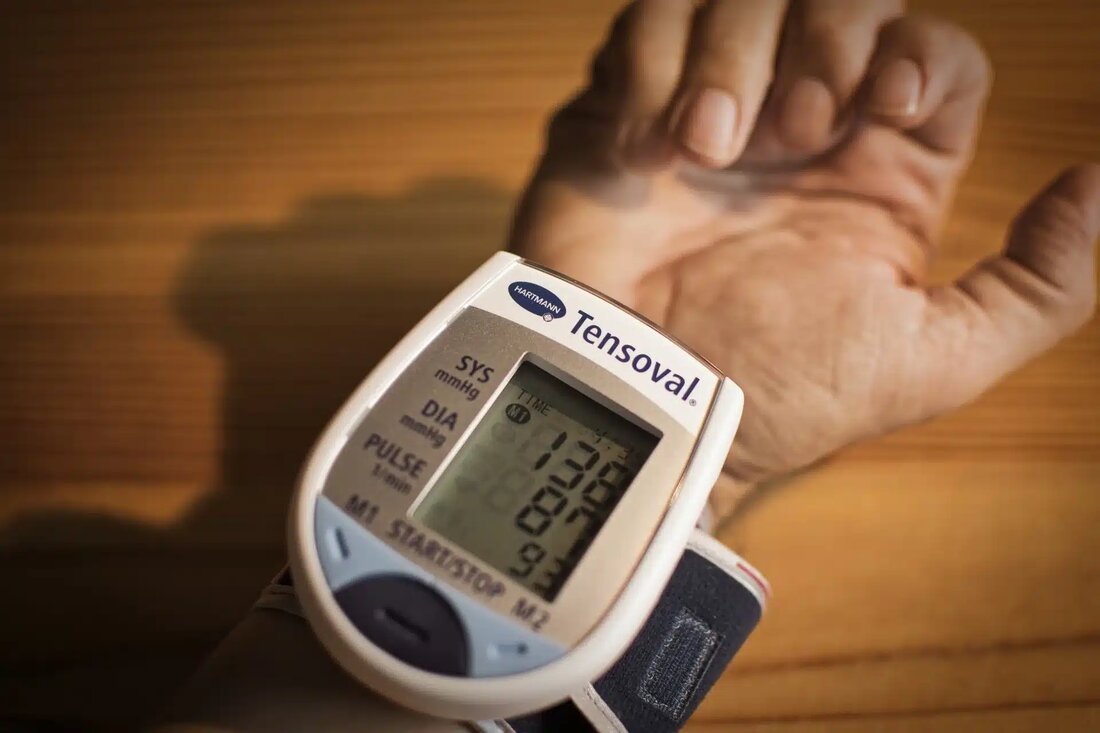How massage can affect blood pressure in hypertension patients – A meta-analysis
New meta-analysis shows: Massage could minimally reduce blood pressure in hypertension patients. More research needed!

How massage can affect blood pressure in hypertension patients – A meta-analysis
High blood pressure (hypertension) is a common chronic disease affecting approximately 1.13 billion people worldwide. Treatment for high blood pressure usually involves both drug and non-drug approaches. One of the non-drug therapies is massage, a form of complementary and alternative medicine that aims to relieve physical discomfort and promote general well-being.
A recent meta-analysis examined how effective massage is as a treatment for lowering blood pressure in hypertension patients. A meta-analysis combines and analyzes data from different studies to get a clearer picture of the research results. In this specific analysis, six studies with a total of 290 participants were evaluated. The results showed minimal reductions in systolic (the upper value) and diastolic (the lower value) blood pressure in the patients who received massage therapies.
Although the results suggest a slight improvement, the difference in blood pressure is very small. The researchers therefore recommend further randomized control studies in order to better assess the effectiveness of massage as a means of lowering blood pressure. They also point out that there is currently limited research and that larger studies with longer follow-up times are needed to draw definitive conclusions.
If future research proves clearly positive, it could lead to doctors recommending massage as a complementary treatment to existing therapies for high blood pressure patients. Especially since massage therapies typically come with few or no side effects, they could be an attractive option for people looking for ways to lower their blood pressure naturally.
Basic terms and concepts:
- Hypertonie (HTN): Medizinischer Begriff für Bluthochdruck.
- Meta-Analyse: Statistisches Verfahren, bei dem Ergebnisse aus mehreren Studien zusammengefasst und analysiert werden, um übergeordnete Trends oder Effekte zu ermitteln.
- Randomisierte Kontrollstudie: Studientyp, bei dem Teilnehmer zufällig einer von mindestens zwei Gruppen zugewiesen werden; eine Gruppe erhält die zu untersuchende Intervention, während die andere Gruppe eine Platzbo-Intervention oder Standardbehandlung erhält.
- Systematischer Review: Eine umfassende Zusammenfassung der vorhandenen Evidenz zu einem bestimmten Forschungsthema, die strengen methodischen Standards folgt.
- Systolischer Blutdruck: Der höhere Wert in einer Blutdruckmessung, der den Druck in den Arterien erfasst, wenn das Herz schlägt.
- Diastolischer Blutdruck: Der niedrigere Wert in einer Blutdruckmessung, der den Druck in den Arterien misst, wenn das Herz zwischen den Schlägen ruht.
Minimal reduction in blood pressure through massage in hypertensive patients
The present meta-analysis focused on evaluating the effects of massage therapy on blood pressure in patients with arterial hypertension (HTN), a global health challenge affecting an estimated 1.13 billion people. Successful treatment of hypertension involves both pharmacological and non-pharmacological interventions. In this research context, the role of massage therapy, a widely used complementary and alternative medical treatment that relieves physical discomfort and promotes general well-being, was examined in detail.
The methodology and data basis for the analysis were electronic databases such as PubMed, Prospero, Scopus, ClinicalTrials.gov, Embase and the Cochrane Library, which were searched up to March 2021. Experimental studies that met the PICO criteria (population, intervention, comparison, outcome) with the primary outcome of blood pressure were included. The meta-analysis used a random effects model to generate a summary of treatment effects expressed as a standardized mean difference (SMD) with a 95% confidence interval (CI).
As a result, six studies were included in the review, with a participant number of 290 patients, of which 148 belonged to the experimental group and 142 to the control group. The meta-analysis revealed a minimal reduction in systolic blood pressure (SMD: -0.65 mmHg, 95% CI: -4.75, 3.55) and diastolic blood pressure (SMD: -0.68 mmHg, 95% CI: -2.43, 1.06) with significant heterogeneity (I > 94%).
The conclusions suggest that massage therapy may produce a minimal reduction in blood pressure in patients with hypertension. Despite the results found, the data is limited and still emerging. Further randomized control trials are needed to strengthen the recommendation of massage as an effective intervention for blood pressure reduction. Furthermore, larger prospective studies with long follow-up periods are necessary to verify the results from this meta-analysis.
For more detailed information and further insight into the specific studies included in this meta-analysis, please refer to the source https://pubmed.ncbi.nlm.nih.gov/38432790.

 Suche
Suche
 Mein Konto
Mein Konto
